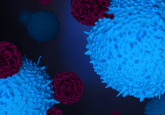Circular RNA expression in basal cell carcinoma

Basal cell carcinoma (BCC), is a semimalignant, slow growing, locally infiltrating and the most frequently occurring tumor in humans [1,2]. Although first described in 1900 by Krompecher as ‘carcinoma epitheliale adenoides’, the molecular pathogenesis is today still not completely understood [3]. Mutations of the PTCH1 receptor as part of the SHH signal transduction pathway were demonstrated in 70% of the BCCs in the form of loss-of-function mutations [4–6]. In 10% of all BCCs, gain-of-function mutations of SMOH protein that is naturally present on the cell membrane have been demonstrated [7].
In addition to a disturbance in the SHH signal transduction pathway, previous reports have shown a dysregulation of the miRNA, machinery and miRNA expression in BCC assuming a molecular pathological role of this noncoding RNA (ncRNA), in BCC formation [8–13]. In a sequencing study, Heffelfinger et al. described 20 miRNAs that demonstrated varying expression between BCC subtypes on a significant level [14]. In a BCC mouse model, hsa-miR-203 was identified as a tumor suppressor that was suppressed by the activation of the SHH signal transduction pathway [15]. Hsa-miR-146a expression was correlated to BCC formation in women [16].
Click here to view the full article in Epigenomics.

